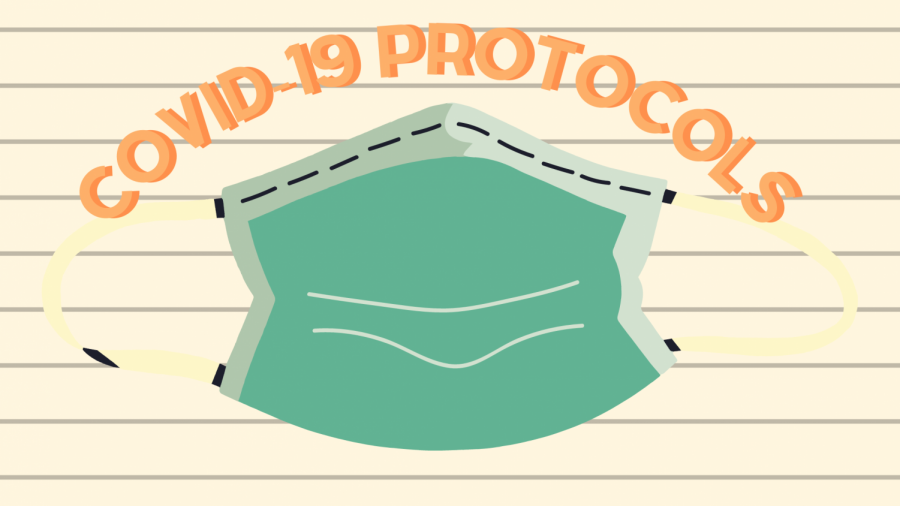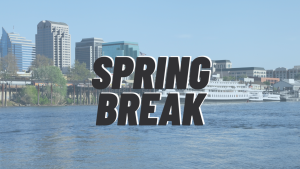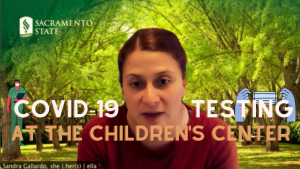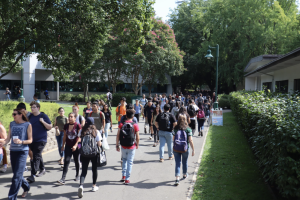Sac State COVID-19 protocol, unmasked
Affected students discuss how Sac State handles housing and sports
The Sac State IIPP COVID-19 Safety Plan protocols for students and faculty on campus are assembled to reduce the risk of a COVID-19 infection, but cannot guarantee that the spread of the infection will not occur. Graphic made in Canva by Jenna Cooper and Emmely Ramirez.
December 17, 2020
Since the beginning of the COVID-19 pandemic, there have been over 50,000 confirmed COVID-19 cases and almost 700 deaths in Sacramento County. The Sacramento region announced a stay-at-home order Dec. 9 after the region fell below 15% ICU capacity.
This semester, Sacramento State has seen a total of 62 positive cases on campus with five on campus the week of Dec. 7 to Dec. 13.
In the beginning of the fall 2020 semester, Sac State released its Injury and Illness Prevention Plan (IIPP) COVID-19 Safety Plan. The Sac State IIPP COVID-19 Safety Plan protocols for students and faculty on campus states it was assembled to reduce the risk of COVID-19 infections on campus but cannot guarantee that the spread of the virus will not occur.
In this article:
Safety plan details testing for students, quarantine guidelines
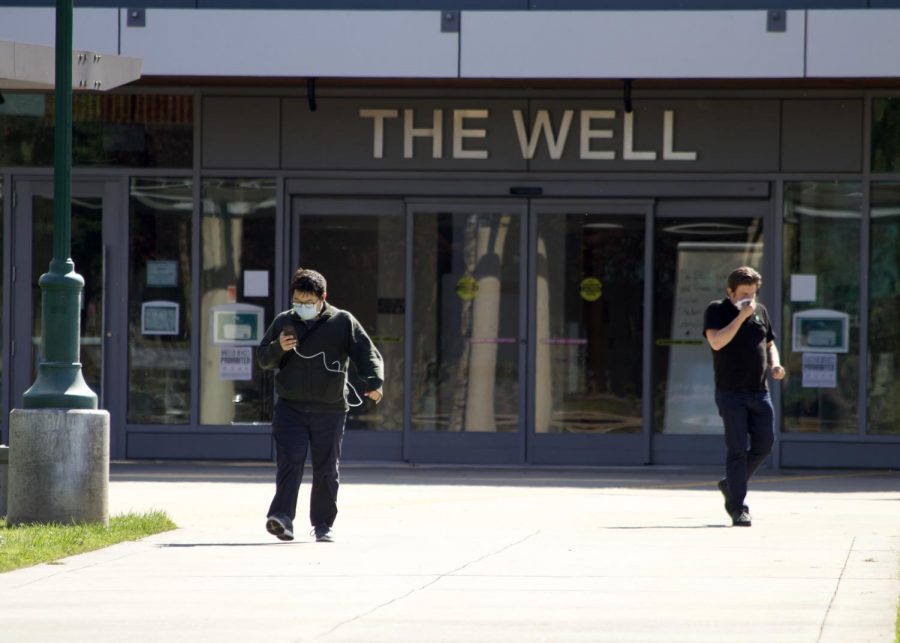
The plan includes detecting trends of COVID-19 infections on campus, contact tracing and working directly with medical services on campus and the Sacramento County Department of Public health when infections occur.
According to the safety plan, “Employees are to report symptoms to supervisors. Students are required to self-assess daily for any COVID-19 symptoms, and if any are present, not come to campus.”
The plan says Sac State does not conduct regular temperature checks for students or employees entering campus and instead access is dependent on self-reporting.
Joy Stewart-James, associate vice president of Sac State’s Health and Counseling Services, said free rapid antigen tests are available at the health center for symptomatic students.
According to the U.S. Food and Drug Administration, antigen tests detect proteins that are present in particles of the virus and can give patients results in less than an hour.
“The rapid antigen testing that is available at Student Health and Counseling Services is recommended only for symptomatic individuals,” Stewart-James said. “There is no cost for students.”
Samuel Jones, Sac State interim executive director of University Housing Services, said that if students living in the housing department at Sac State were to test positive for COVID-19 and need to quarantine, they would have to notify SHCS by completing an online form and would be contacted by a SHCS representative.
The entire first floor of the American River Courtyard is available for Sac State students who need to quarantine according to housing administrative support coordinator Luis Gomez.
Jones said that students in quarantine or isolation order their food via an online form with University Enterprises, Inc. Dining. University Housing Services will then pick up the food and deliver it to the student’s door twice a day without contact. Groceries can also be delivered.
Jones also said that SHCS is managing contact tracing for positive COVID-19 cases. According to the safety plan, SHCS is supposed to coordinate contact tracing with the Sacramento County Department of Public Health.
According to Stewart-James, when SHCS receives a report from a faculty member, staff member or student who has been exposed to the virus or is experiencing symptoms, SHCS then conducts a case interview within 24 hours in order to contact anyone who could have been exposed.
Lisa Johnson, director of health services, said exposure includes dorm residents sharing restrooms and common areas with a person who has been exposed to COVID-19 or someone who has symptoms without a known exposure.
Johnson did not state how Sac State does contact tracing for common rooms such as bathrooms, hallways and common areas where people frequently come in close contact with others for brief periods of time.
Residents are not notified that there is a positive case in their building unless they are confirmed to have been in contact with the person who tested positive through contact tracing, according to Johnson.
Residents of Sac State dorms share their experiences on campus
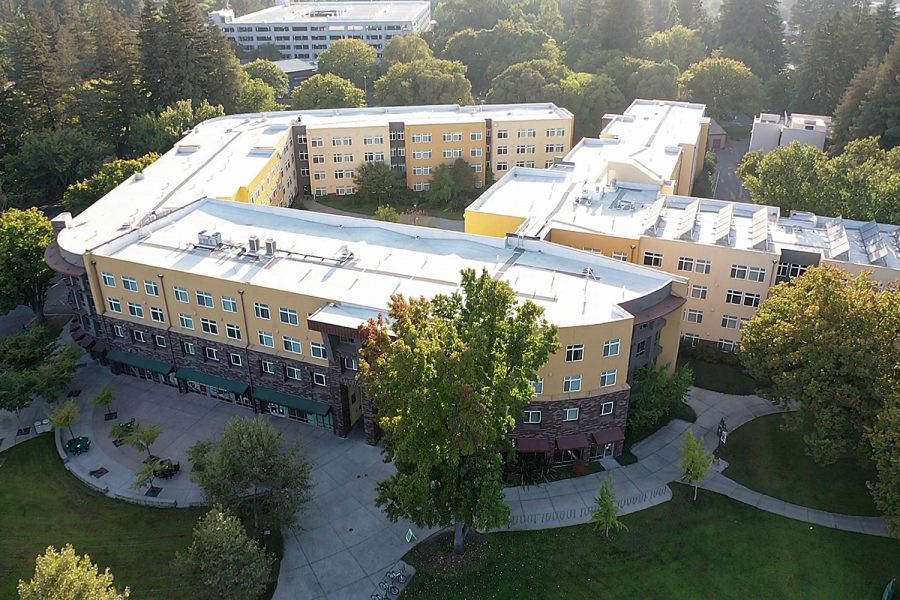
Sac State student housing also follows the IIPP COVID-19 Safety Plan protocols, such as increased sanitization and disinfection throughout the student housing buildings.
Isaiah Mercado, junior journalism major, is currently living at the Sac State dorms for the first time this semester. Mercado said part of the protocols he has to follow in accordance with Sac State guidelines is to wear a mask at all times when he leaves his dorm and to sanitize his hands often.
Mercado said that Sac State announces its COVID-19 protocols by placing posters around student housing and sending out emails to ensure students are feeling safe on campus and in student housing.
“General rules for COVID at the dorms are mostly having a mask on at all times when you leave your dorm,” Mercado said. “There can only be two people at the same time in an elevator and when you enter or leave your dorm you must slide your card in and always sanitize your hands often.”
Mercado also said that he does not share his dorm with his roommate and that the only room they share in common is their living room where they share the refrigerator.
“People from the same dorm are allowed to be in the same rooms,” Mercado said. “It can only be one person and they can’t stay overnight.”
Mercado said if a student who lives at Sac State housing tests positive for COVID-19 they will be put in a designated room where they can quarantine for 14 days. Mercado said that he has not been tested for COVID-19 or known anyone from Sac State housing who has been tested by SHCS.
Mercado said he feels that Sac State is doing a good job at keeping the students in student housing safe and healthy because of all the protocols they are required to follow, such as wearing masks.
Mercado also said he feels Sac State’s safety ambassadors, which he mostly sees outside the dorm and at the eatery, help to keep student housing safe.
RELATED: Q&A with a student safety ambassador: COVID-19 protocol on campus
Jamiel Sampson, sophomore theatre major, also lives in student housing.
“The school has not really told us what happens if someone gets covid,” Sampson said via text message. “I have no clue.”
Unlike Mercado, Sampson said he does not feel as safe in Sac State student housing because of the lack of information he has received from the school.
“I trust the school and how safe they have been when it comes to protection, disinfecting and monitoring,” Sampson said. “However it is still a little scary knowing that these situations could arise and the school does not have a set plan for that.”
Student-athletes required to test for COVID-19 three times a week
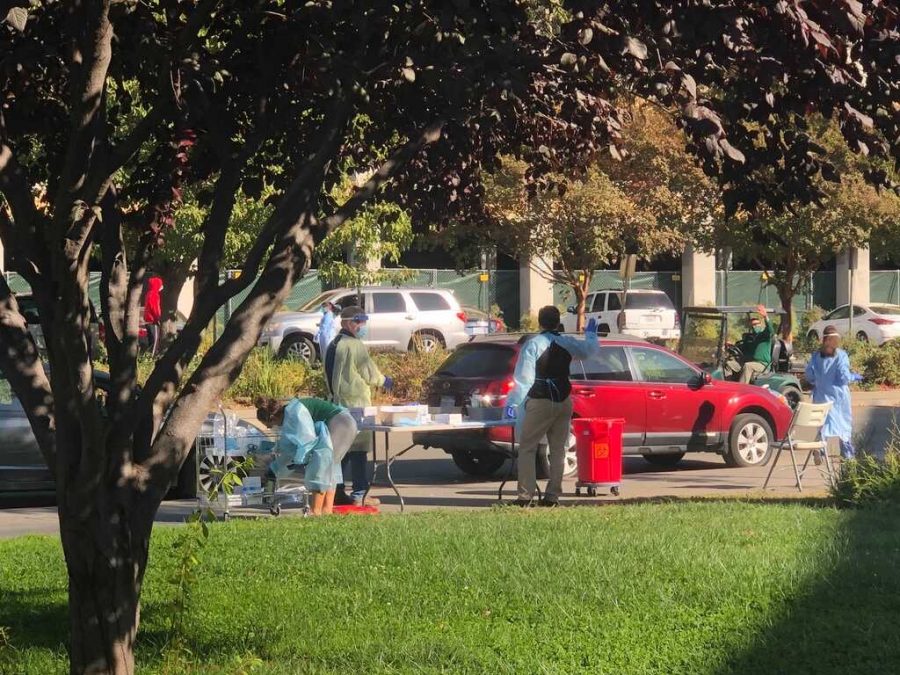
Although students are only tested when symptomatic, student athletes are tested multiple times a week regardless of symptoms. According to Brian Berger, the Sac State athletics media relations director, players, coaching staff, athletic training staff and any managers involved in season sports get tested three times a week. Athletes who are off season but still practicing on campus get tested once a week.
RELATED: Athletes required to test for COVID-19 three times a week
“That’s the NCAA policy across the board, so any time a team is in season it’ll be three times a week and it has to be a full day between tests,” Berger said. “For our conference, they require at least one of those three tests to be a PCR test and the other two can be antigen testing.”
PCR tests, or polymerase chain reaction tests, detect viral genetic material in a patient, according to the U.S. Food and Drug Administration.
Berger said that the COVID-19 tests provided by SHCS are funded by the Hornet Athletics budget.
“Obviously it’s a tough year and we have a little bit of savings as far as what was expected for travel expenses because we’re not travelling as much as for certain sports at all,” Berger said. “It’s a cost that landed on our laps and we’re having to pay for this year.”


























































































































